
This resource includes tasks aligned to 5.G.3.
- Subject:
- Mathematics
- Material Type:
- Activity/Lab
- Formative Assessment
- Author:
- Drew Polly
- Date Added:
- 07/27/2020

This resource includes tasks aligned to 5.G.3.

This parent guide supports parents in helping their child at home with the 5th grade Math content. Within the folder you will access Parent Guide PDFs in FIVE Languages: Arabic, English, Hindi, Spanish, and Vietnamese to help on-going communication with caregivers.

This resource accompanies our Rethink 5th Grade Math course. It includes ideas for use, ways to support exceptional children, ways to extend learning, digital resources and tools, tips for supporting English Language Learners and students with visual and hearing impairments. There are also ideas for offline learning.

This lesson is for Grades 4-5 math. At Home Learning Lessons are a partnership between the North Carolina Department of Public Instruction, PBS North Carolina, and the William and Ida Friday Institute for Educational Innovation. Each lesson contains a video instructional lesson, a PDF lesson plan with a transcript, and a PDF file of extension activities.

This resource includes additonal resources for Grade 5 Cluster 7.

This is a common formative assessment for Grade 5 Geometry- 5.G.1 and 5.G.3.
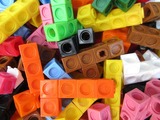
In this lesson students will explore characteristics of quadrilaterals.

This resource provides Next Steps and ideas for differentiation and supporting students based on their performance and academic needs. This supports MTSS and RTI.

Here is a visual describing the relationship of quadrilaterals based on their properties.

This math unit teaches students to classify quadrilaterals into categories based on their properties; classify quadrilaterals in a hierarchy based on properties. This unit helps to explain that attributes belonging to a category of quadrilaterals also belong to all subcategories of that category.

This grade 5 unit of geometry lessons explores triangles and quadrilaterals through 4 hands-on activities and 6 worksheets.

These are parent letters that could be sent home before beginning Grade 5 Cluster 7. There are letters in English and Spanish.
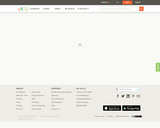
This short video and interactive assessment activity is designed to give fifth graders an overview of quarter-circles and semi-circles.
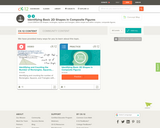
This short video and interactive assessment activity is designed to teach fifth graders about identifying basic 2d shapes in composite figures.
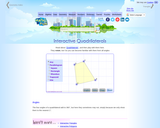
This interactive has a link to read about Quadrilaterals, as well as a place to manipulate and play with quadrilaterals' angles, sides, and diagonals.
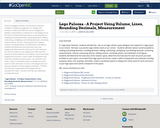
Purpose: Engages students and introduces elements needed for building a playground.
In “Playground Palooza”, students will take the role of a playground designer responding to a request for a new playground at the school. Students will learn about numerical patterns, reading and writing decimals, rounding decimals, adding, subtracting, multiplying, and dividing decimals, converting measurements, volume, measuring volume, relating volume, coordinate planes, and attributes of 2D figures. Students will determine the total area of the new playground, determine the total area for each structure you want included on your playground, determine the volume of sand needed for the sandbox, use at least three playground structures, create a table of equipment and materials including company name, cost, quantity, and totals, create a coordinate system to display the center point for each structures or area on the playground, and submit a blueprint of their playground design.
***NOTE
This PBL was created before NC adopted the NC standards for Math. Therefore this PBL also addresses: rounding decimals.

This document provides an overview for Grade 5 Cluster 7.

Students use a ruler to draw two different quadrilaterals, and then identify, describe, and compare the shapes that they created.

In this lesson plan, students are tasked with designing a playground at their school. Each section has its own requirement for each quadrilateral. In the end, they must be able to defend their shape against a classmate's of why they choose the shape. They must also list any other quadrilateral that could be drawn in that space.

Purpose: Engages students and introduces elements needed for building a playground.
In “Playground Palooza”, students will take the role of a playground designer responding to a request for a new playground at the school. Students will learn about numerical patterns, reading and writing decimals, rounding decimals, adding, subtracting, multiplying, and dividing decimals, converting measurements, volume, measuring volume, relating volume, coordinate planes, and attributes of 2D figures. Students will determine the total area of the new playground, determine the total area for each structure you want included on your playground, determine the volume of sand needed for the sandbox, use at least three playground structures, create a table of equipment and materials including company name, cost, quantity, and totals, create a coordinate system to display the center point for each structures or area on the playground, and submit a blueprint of their playground design.
***NOTE
This PBL was created before NC adopted the NC standards for Math. Therefore this PBL also addresses: rounding decimals.